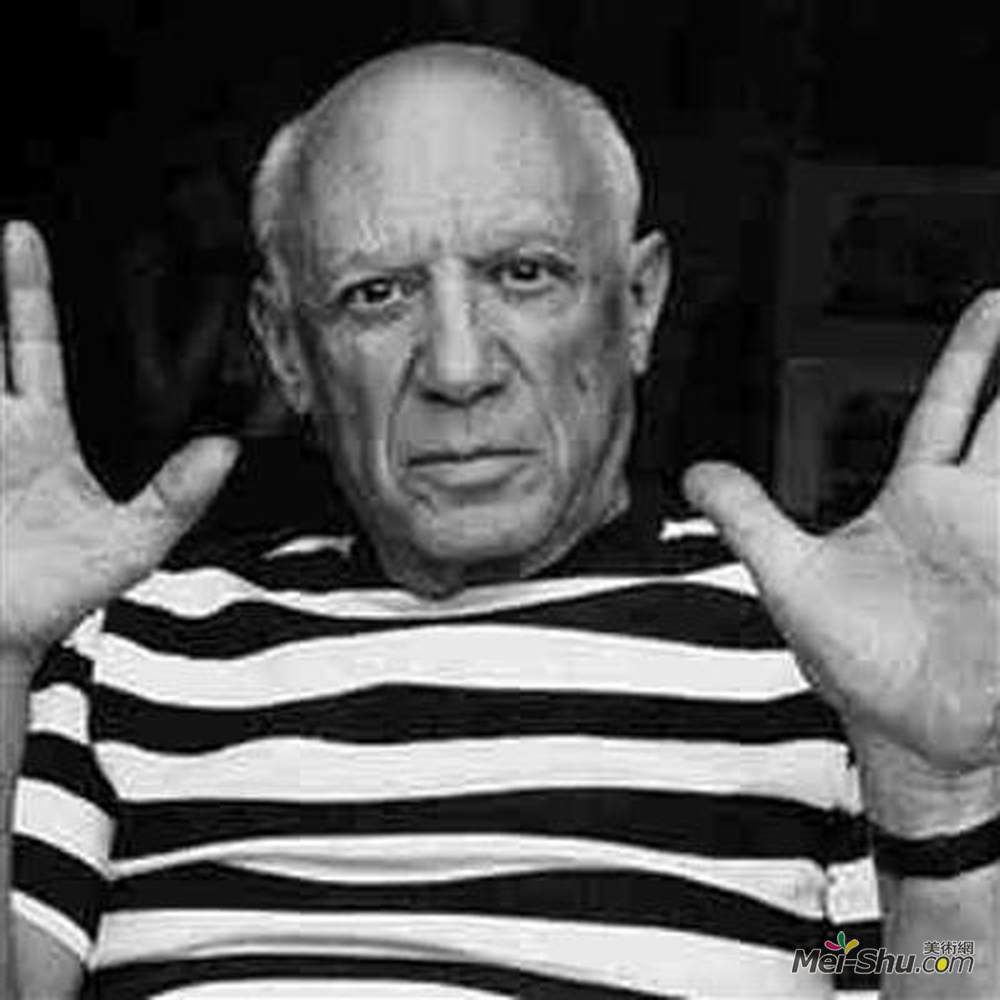
巴勃罗·毕加索(Pablo Picasso)
艺术家: 巴勃罗·毕加索
生于: 1881年10月25日;马拉加,西班牙
卒于: 1973年4月08日;法国穆然
国籍: 西班牙
流派: 立体主义
领域: 绘画,雕塑,绘画
受影响: 马克·夏加尔,亨利·卢梭,埃尔·格列柯,弗朗西斯科·戈雅,保罗·高更,保罗·塞尚,亨利·马蒂斯,奥古斯特·罗丹,尼古拉斯·普桑,皮耶尔·奥古斯特·雷诺阿
影响: 马克·夏加尔,阿米地奥·莫迪里阿尼,威廉·德·库宁,Jasper Johns,Arshile Gorky,Lee Krasner,杰克逊·波洛克,罗伯特·德劳奈,皮特·蒙德里安,Karel Appel,Balcomb Greene,弗朗西斯·培根,David Alfaro Siqueiros,萨尔瓦多·达利,Tamara de Lempicka,Vilhelm Lundstrom,Cubism,Surrealism,Pop Art,Conceptual Art
朋友: 乔治·勃拉克,Constantin Brancusi,Man Ray,Max Jacob,阿米地奥·莫迪里阿尼,Christopher Wood,Mykhailo Boychuk
机构: 西班牙马德里圣费尔南多贝拉斯阿特斯学院
巴勃罗·鲁伊斯·毕加索是二十世纪第一半时最具统治力和影响力的艺术家。最重要的是开拓性立体派,他还发明了拼贴画,并对超现实主义做出了重大贡献。他认为自己首先是一个画家,但他的雕塑影响很大,他还探索了各种领域,如版画和陶瓷。最后,他是一个著名的魅力人格,在巴黎ECOLE的领导人物。他与女性的许多关系不仅渗入他的艺术中,而且可能已经引导了艺术的进程,他的行为在流行的想象中已经体现为放荡不羁的现代艺术家。
毕加索拒绝了马蒂斯&_关于色彩的首要重要性和作用的观点,并且而是聚焦于表现形式和空间的新的图画方式。受C& zanne的新奇事物以及非洲雕塑和伊比利亚古代艺术的影响,他开始赋予人物更多的结构,并解构自文艺复兴以来主导绘画的透视传统。这使他(和乔治·布莱克一起)发展出一个全新的立体主义运动,它迅速成为现代艺术的前沿。同时,毕加索本人也拒绝了“立体主义”这个标签,尤其是当批评家开始区分他所追求的两种重要方法时——分析和综合。
在20世纪20年代和30年代,毕加索采用了新古典主义的比喻风格。随着他逐渐成熟,他创作了由诸如普森、英格丽丝、维拉兹克斯、戈雅、伦勃朗和埃尔·格雷科等艺术家创作的他自己版本的规范性杰作。
毕加索&在他的一生中影响深远。他开创立体派的作品建立了一套绘画问题、装置和方法,直到20世纪50年代,这些问题仍然很重要。纽约现代艺术博物馆(MoMA)被称作“巴勃罗建造的房子”,因为它广泛地展示了艺术家&39的工作。毕加索创作了一些20世纪最伟大的绘画,其中几幅已经取得了标志性的地位(莱斯·德米塞勒斯·阿维尼翁、格尔尼卡、哭泣的女人)。
Artist :Pablo Picasso
Additional Name :Pablo Diego José Francisco de Paula Juan Nepomuceno María de los Remedios Cipriano de la Santísima Trinidad Ruiz y Picasso
Born : Málaga, Spain
Died : Mougins, France
Nationality :Spanish
Art Movement :Cubism
Field :painting,sculpture,drawing
Influenced by :marc-chagall,henri-rousseau,el-greco,francisco-goya,paul-gauguin,paul-cezanne,henri-matisse,auguste-rodin,nicolas-poussin,pierre-auguste-renoir
Influenced on :marc-chagall,amedeo-modigliani,willem-de-kooning,jasper-johns,arshile-gorky,lee-krasner,jackson-pollock,robert-delaunay,piet-mondrian,karel-appel,balcomb-greene,francis-bacon,david-alfaro-siqueiros,salvador-dali,tamara-de-lempicka,vilhelm-lundstrom,artists-by-art-movement/cubism,artists-by-art-movement/surrealism,artists-by-art-movement/pop-art,artists-by-art-movement/conceptual-art
Friends and Co-workers :georges-braque,constantin-brancusi,man-ray,max-jacob,amedeo-modigliani,christopher-wood,mykhailo-boychuk
Art institution :Real Academia de Bellas Artes de San Fernando, Madrid, Spain
Pablo Picasso was the most dominant and influential artist of the 1st half of the 20th century. Associated most of all with pioneering Cubism, he also invented collage and made major contribution to Surrealism. He saw himself above all as a painter, yet his sculpture was greatly influential, and he also explored areas as diverse as printmaking and ceramics. Finally, he was a famously charismatic personality, the leading figure in the Ecole de Paris. His many relationships with women not only filtered into his art but also may have directed its course, and his behavior has come to embody that of the bohemian modern artist in the popular imagination.
Picasso rejected Matisse's view of the primary importance and role of colour, and focused instead on new pictorial ways of representing form and space. Influenced by novelties of Cézanne, and also by African sculpture and ancient Iberian art, he started to lend his figures more structure, and to deconstruct the conventions of perspective that had dominated painting since the Renaissance. This led him (alongside with Georges Braque) to evolve an entirely new Cubist movement, which rapidly became the cutting edge of modern art. At the same time, Picasso himself rejected the label "Cubism," especially when critics began to differentiate between the two key approaches he pursued - Analytic and Synthetic.
In the 1920s and 1930s Picasso adopted a neoclassical figurative style. As he matured he worked on his own versions of canonical masterpieces by artists such as Poussin, Ingres, Velazquez, Goya, Rembrandt, and El Greco.
Picasso's influence was profound and far-reaching for most of his life. His work in pioneering Cubism established a set of pictorial problems, devices, and approaches, which remained important well into the 1950s. The Museum of Modern Art in New York (MoMA) has been called "the house that Pablo built," because it has so widely exhibited the artist's work. Picasso created some of the greatest 20th century paintings, several of which have achieved iconic status (Les Demoiselles d'Avignon, Guernica, Weeping Woman).